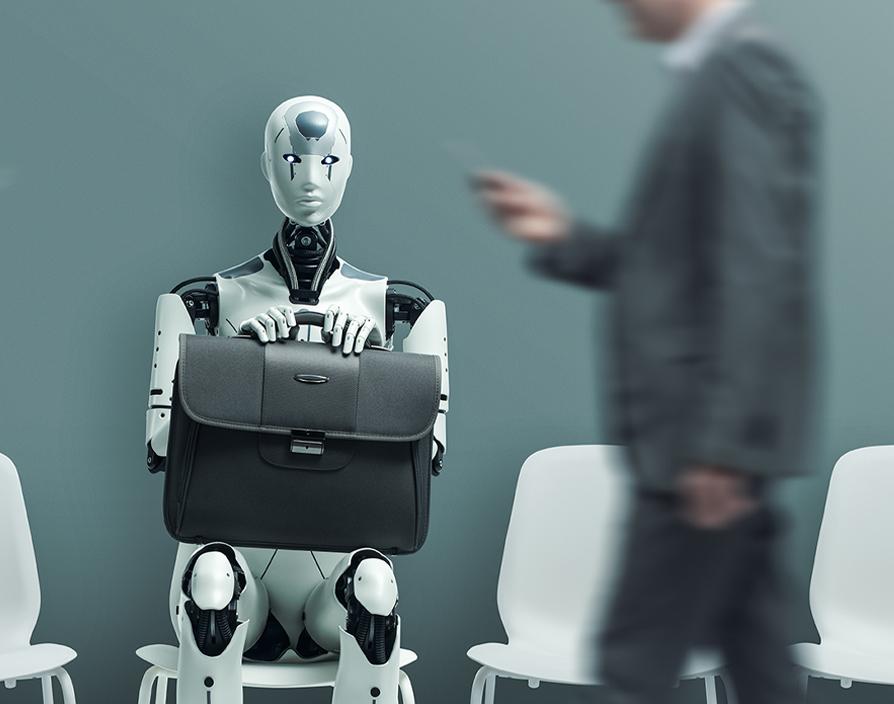These are smart systems or agents that can take over part or all of many tasks within a business and this is the case already. This means you now need to think about having AI R (i.e. AI Resources) as well as HR (Human Resources)
We live in an era of exponential technological change. In the business world, artificial intelligence (AI) is rapidly evolving, and the progression is transforming not just processes, but the roles and skills employees need to remain relevant and valuable.
At Implement AI, we have developed a 5-level framework that categorises companies based on their degree of AI adoption, or what we call. ‘AI-assistance’. This ranges from Level 0, with no automation, to Level 5, where AI autonomously make decisions and can run key functions without human intervention.
As organisations move up these levels, integrating more sophisticated AI, how does this impact individual employees on a day-to-day basis? What are the key changes employees must prepare for to remain relevant in the labour market and how will employers manage the transition away from Level 0?
The repetitive task exodus
I often recommend business owners and managers to automate the mundane. One of the first and most noticeable changes will be that repetitive, rules-based tasks are automated by AI. For example, a Level 1 organisation may use basic AI chatbots for simple customer service queries. Level 2 sees more complex workflows automated, like using AI sales assistants to qualify leads and conduct basic research.
By Level 3, AI handles many specialised tasks independently within defined parameters. For employees, this means mundane duties like data entry, scheduling, and reporting get handled by AI. Even more complicated administrative work and analysis will be automated with intelligent process automation.
This initial welcome relief from repetitive tasks will empower employees who can focus their energy on higher value work that is creative, collaborative, analytical, and relationship-based.
A 2023 report published by IBM’s Institute for Business Value that surveyed over 3,000 executives worldwide echoes this expectation that AI will augment the workforce more than replace roles. With the tedium gone, employees are empowered to do what humans still do best – ideate, create, connect, and care. This should improve job satisfaction, but the pace of change will differ for varying roles.
AI won’t just replace factory workers
It is short-sighted to assume AI and automation will only disrupt stereotypically impacted roles like factory workers, administrators and drivers. Advanced AI is already impacting white-collar professions previously thought safe from disruption.
A 2017 PwC study, published before the arrival of generative AI, estimated 22% of jobs in legal services are at high risk of being automated by the early 2030s. This number is now going to be materially higher. Contract review, document discovery and due diligence can all be managed more efficiently by AI. Lawyers may focus more on strategy, arguments and client relations.
Similarly, a Deloitte analysis found auditing tasks like company data analysis and financial statement validation could soon be automated, allowing auditors to emphasise higher judgement and client interactions. Tax professionals too will see routine compliance work handled by AI tools. Radiologists have already been replaced by computer-vision systems that are better at reviewing images and spotting disease.
Continuous learning is the key to job security
As AI-related technologies become more advanced and multi-modal systems replicate all human senses, virtually all knowledge work is likely to see significant automation of routine cognitive tasks. Administrative staff, analysts, accountants, lawyers, marketers, data analysts, researchers, and managers will all be impacted.
A 2022 UK government report estimated that 46% of tasks performed by administrative workers and 44% in legal professions could be automated, compared to just 4-6% of tasks in maintenance and construction roles.
With technology constantly evolving, learning cannot stop after formal education ends. Across roles and seniority levels, continuous upskilling must be embraced if employees are to retain value. Failing to maintain digital literacy and adopt new technical skills as technology progresses risks being outdated and less employable.
Hybrid human-AI collaboration
Rather than whole jobs being eliminated, portions of roles will be reassigned to AI while the human employee focuses more on strategy, oversight and higher-order thinking.
Doctors spend less time reading scans and more time advising patients. Accountants automate bookkeeping while providing consultative services. Marketers conceive messaging strategies rather than manually laying out ads. Logistics coordinators leverage supply chain analytics rather than manually tracking inventory. AI doesn’t just shape roles but creates new hybrid positions like “decision intelligence analysts” who guide strategy using data. AI oversight roles will also be required, especially in regulated sectors.
This integration allows organisations to scale expertise. With an AI assistant generating relevant market insights, a strategic planning manager can now oversee multiple business units rather than just one. Expertise is leveraged exponentially.
Invest in upskilling or perish
But AI is going to continue to evolve and as its capabilities improve so will its ability to do more and compete with more high-level human cognitive work. Perhaps the most crucial skill for the AI-integrated workplace is adaptability to constant change. With technology rapidly evolving, learning cannot stop after orientation. Upskilling must be continuous.
IBM found employees at companies recognising this necessity for continual training and development have higher job satisfaction, commitment and trust in leadership. Investing in human capital retains and motivates talent.
Employees at all levels are going to require AI training tailored to their organisation’s needs and changing roles that are augmented with AI.
The competitive advantage of upskilling
There’s a window of opportunity for organisations to upskill employees to create competitive differentiation. Companies providing comprehensive reskilling see greater innovation, productivity and employee retention versus peers. But many still rely on outdated training models. The IBM study found 95% of respondents say their organisation has an upskilling strategy or is working on one. But only 10% feel they have been very effective at addressing employee skill gaps created by new technologies like AI.
Forward-looking companies make upskilling a core component of both employee experience and business resilience. They don’t just assume the existing workforce will organically adapt to AI integration as they will often suffer from fear, uncertainty and doubt. This hands-on guidance creates an upskilling culture that unlocks the power within an organisation’s greatest asset – its people.
Physical labour in the AI era
Looking farther down the road, how could AI impact employees as technology grows more advanced? Once repetitive cognitive tasks have been automated, the next horizon is physical labour.
Warehouse robotics are already displacing pickers and packers. Manufacturing, construction and agriculture automation threaten traditional manual roles. Improvements in robotic dexterity, mobility, perception and object manipulation will accelerate this trend.
PwC estimates AI could provide an economic boost up to 10% of GDP by 2030. However, government reports also warn these technologies may displace significant numbers of human workers over the next decade if not managed responsibly.
The time is now – Prepare your employees
The rise of artificial intelligence introduces as many organisational opportunities as challenges. At each level of AI integration, employees must be prepared via updated policies, modernised management and accessible training channels.
Surveys show many executives are concerned about potential skill gaps, job losses and lack of transparency as AI adoption accelerates. But with the right human-centred strategies, AI can create engaging new roles, not just eliminate them. You organisation can grow revenue without human resource costs, increasing margins, profitability and valuations.
As organisations mover through Level 3 to Level 5 in some roles, there will be friction, but the transition is inevitable. An AI-assisted organisation will rely on AI-assisted employees who must level up their skills continuously to stay ahead of the automation. The time to start preparing for this new environment is now.
Share via:








































